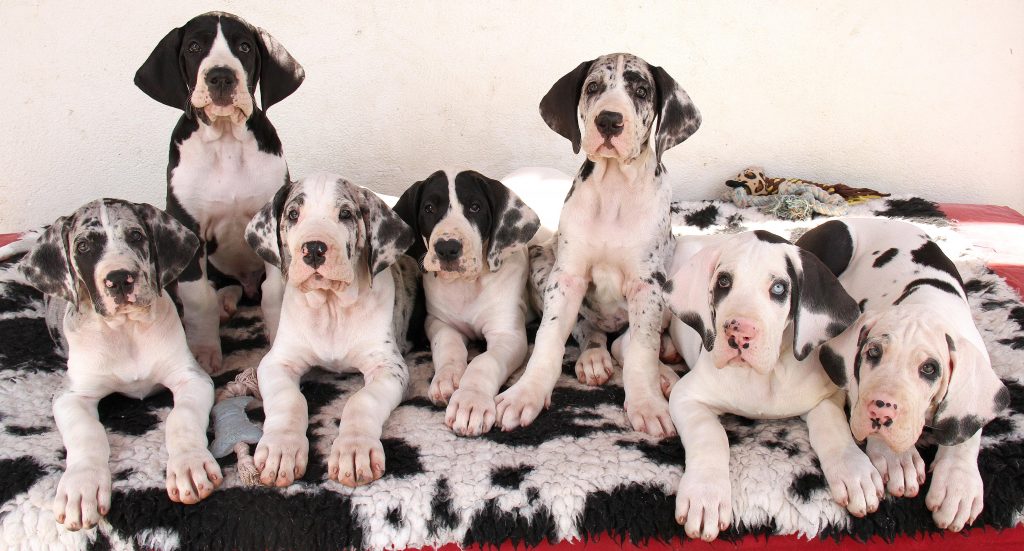As the great dane is one of the breeds with the shortest life span of only about 6,5 years in average and can suffer from several health issues (more info: here) and since the temperament of such a large dog has to be sound, one should very carefully choose the right breeder. It is not so easy for an unexperienced puppy buyer to find the right dog amongst all the online adverts and club websites.

Unfortunately a pedigree by a breed club is not enough to guarantee the health and quality of a puppy, as the regulations for breeders vary enormously amongst the international clubs. Some have strict rules and mandatory health tests, and others only recommend voluntary testing and don’t check the puppies and breeding dogs. So you have to make your own research to find a good breeder.
If the most important question for you is the price of the puppy than you shouldn’t get a great dane at all, because if you lack money than you won’t be able to afford the expenses for a dog this size, which are minimum 150 Euros/month.
Generelly it is recommended to never buy a puppy spontaneously. One should take enough time to consider all aspects of having a dog and to get information about the breed. On this webite you can find plenty of background information about the health and breeding of the great dane. It is the best to visit several breeders to get an impression and your own idea. Respectable breeders will welcome puppy buyers even if they don’t have a litter at the moment, and they will deliberately answer any question. And respectable puppy buyers will inform themselves thoroughly and ask critical questions and are willing to wait one or two years for “the right puppy” and drive a longer distance to get it.
These questions should be considered before buying a great dane puppy:

